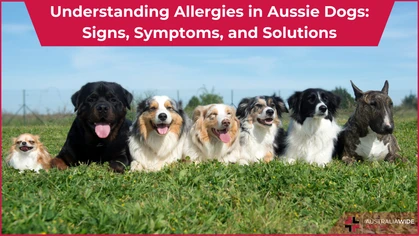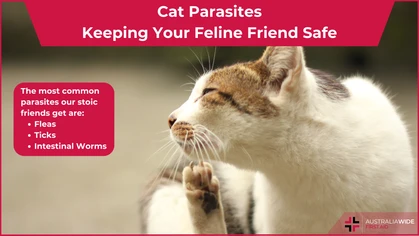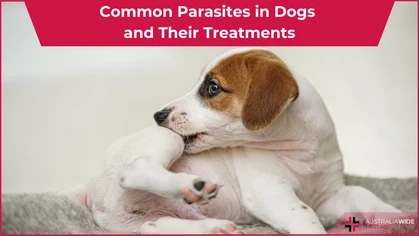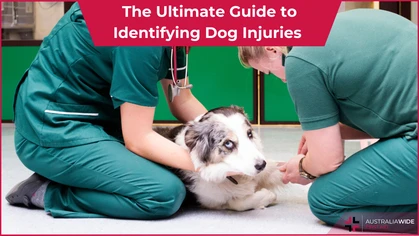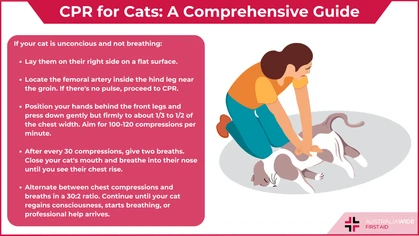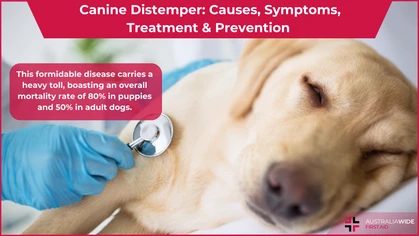Pets First Aid

Pets

Common pet injuries
Would you know how to apply first aid if your pet needed you? Animals are notorious for wanting to explore, try new things and even eat unknown substances out of curiosity. If your pet suffers an injury due to their inquisitive nature or becomes ill for other reasons, it is up to you to take responsibility and ensure they receive the appropriate treatment. The last thing a pet owner wants to see is their much loved dog or cat in pain. First Aid is essential if you want to make your best friend more comfortable on the way to the vet and may even save their life in extreme cases. When treating your animal’s injury or illness the most important thing is ALWAYS your own personal safety. Be wary that animals may bite or scratch you out of fear or aggression if they are in pain.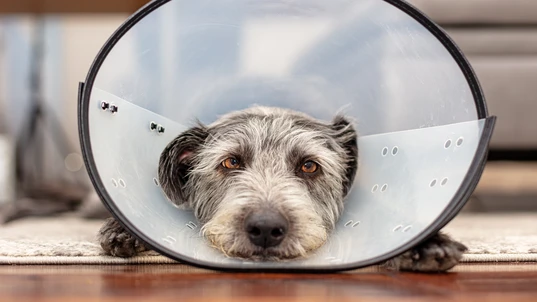
How to treat common pet injuries
If your pet has a nasty cut that is bleeding you need to apply a firm bandage and take them to the vet. If the cut stops bleeding and there is nothing stuck inside, clean the area with saline and ensure there is no dirt left on or around the wound. If the cut shows any sign of infection you should take your pet back to the vet. Fight Wounds Fight wounds often result in bad infections and will need to be treated immediately by a vet. Antibiotics needs to be given within 6-12 hours of the fight to stop the development of a deep infection. To reduce the risk of your animal getting injured in a fight you should keep your cat inside during the night and make sure your dog is securely locked in the backyard. Broken Bones If you suspect your pet has a broken bone, do not hesitate to take them to see a vet. Before moving them you might want to offer some support to the fracture or break by splinting injuries below the knee or elbow and dressing fractures on other parts of the body. Take extreme care when moving them and try to reduce movement near the break as much as possible. Note: If a dog is hit by a car you can try to use a sling to move the animal (your jacket or a blanket for larger dogs). Vehicle accidents often cause a fractured pelvis in small animals, so be cautious of this when moving them. Poisoning Identify the poison and contact your vet immediately. If you are not certain of what the poison is, take a sample of the suspected plant or substance to the vet. Poison can cause death and it is therefore imperative that you get help for your animal as fast as possible.
Resuscitation
If your pet’s heart isn't beating you should start chest compressions (use appropriate pressure for the animal’s size). If your pet’s heart is beating but they are not breathing you need to perform artificial respiration. This involves the following steps:- Lay the animal on their right side.
- Check for any objects in their mouth or throat.
- Carefully pull the tongue out of the mouth as far as it will easily go.
- Gently close your pet’s mouth being careful not to hurt their tongue.
- For small animals, cup your hands around their nose, cover the mouth and nose with your mouth and blow until their chest rises.
- For large dogs you will need to cup your hands around their nose, hold their mouth closed and blow into their nose until the chest rises.
- Blow at intervals of 3-5 seconds, check if breathing has restarted after 1 minute and search for a heartbeat.
- If your pet is still not breathing, continue giving breaths every 6 seconds and regularly check for breathing and a heart beat.
- If you have someone to drive you to the vet, continue artificial respiration on the way there.
Originally published at
https://www.australiawidefirstaid.com.au/resources/first-aid-pets
as part of the Australia Wide First Aid Articles Library
